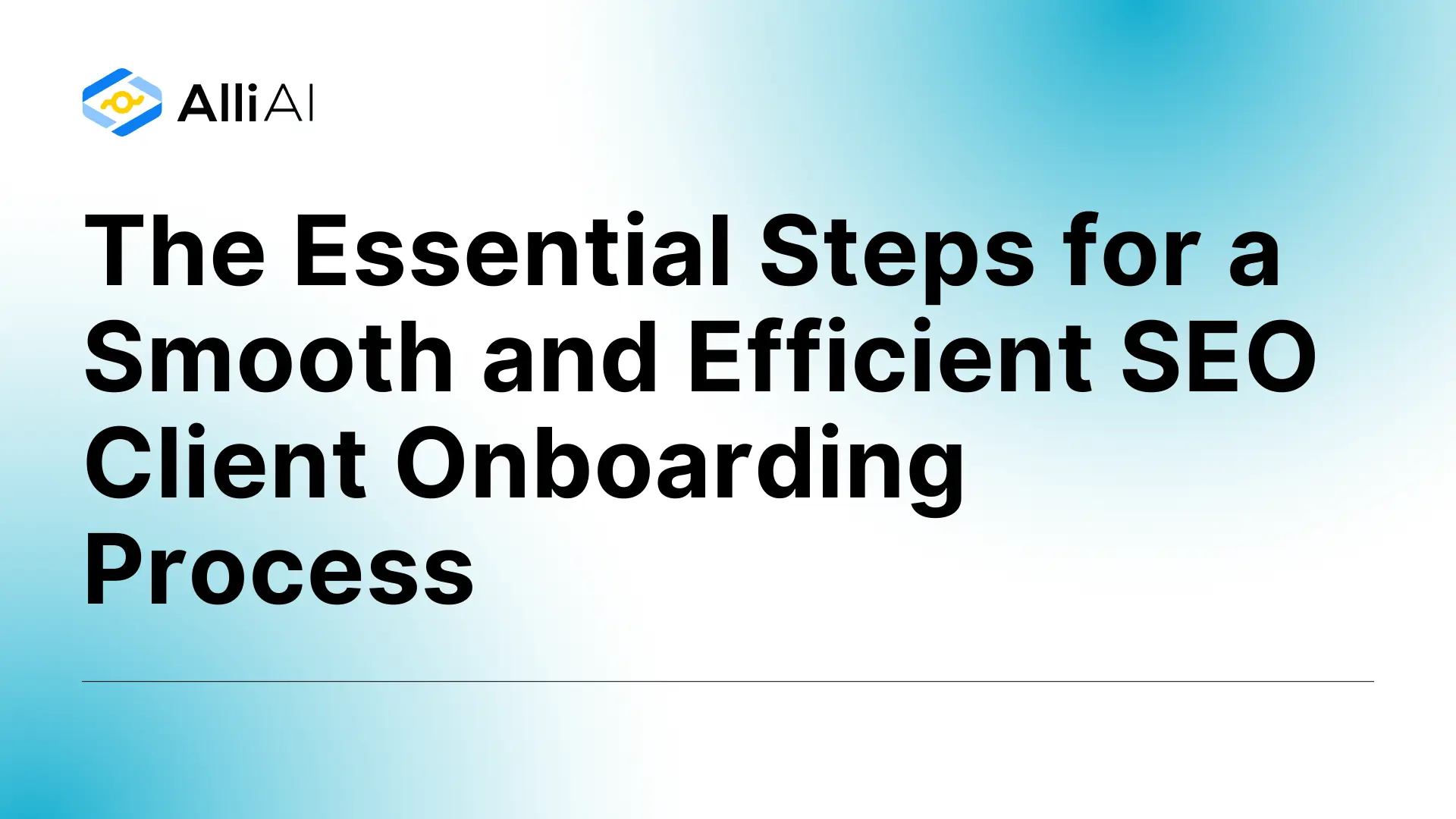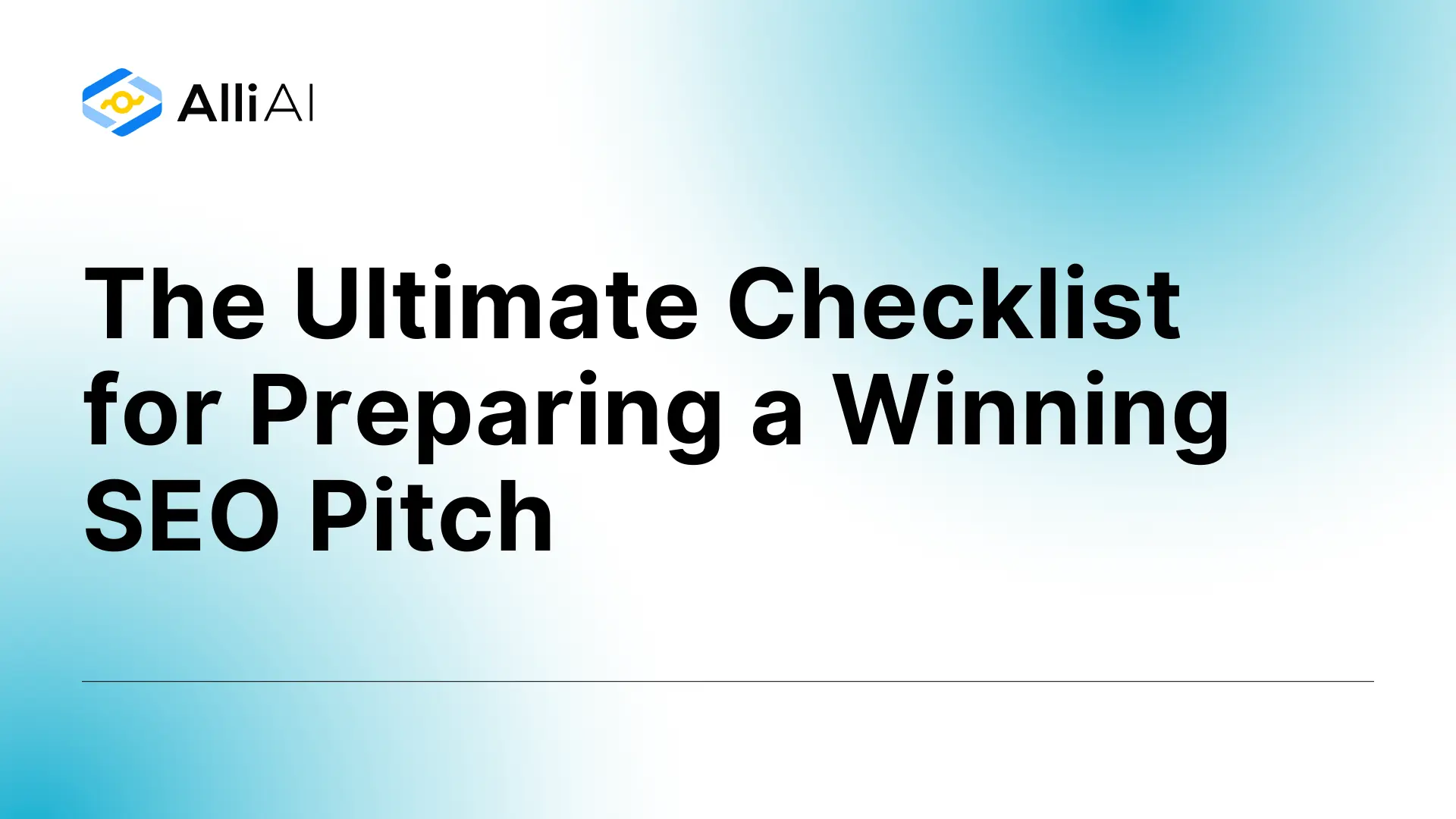Looking to elevate your SEO strategy but feeling stuck with basic keyword research that isn’t delivering results? You’re not alone. Many marketers hit a plateau when relying solely on search volume and difficulty metrics, missing the strategic opportunities that drive real growth.
The solution is advanced keyword research—a comprehensive approach that aligns with business goals, understands user intent, and builds topical authority. This isn’t just about finding keywords; it’s about uncovering the strategic insights that your competitors are missing.
I’ve implemented these exact techniques with clients across multiple industries, helping them discover untapped keyword opportunities that increased organic traffic by over 200% in competitive niches. The difference between basic and advanced keyword research can mean the difference between page 3 obscurity and page 1 dominance.
Let’s walk through the complete process of mastering advanced keyword research in 8 actionable steps.
Step #1: Move Beyond Basic Metrics to Strategic Depth
Begin by shifting your mindset from isolated keywords to strategic objectives. Basic keyword research looks at search volume and keyword difficulty—advanced research connects keywords to your business goals and the entire user journey.
Here’s how to implement this mindset shift:
- Identify your key business objectives (lead generation, sales, brand awareness)
- Map these objectives to different stages of your user journey (awareness, consideration, decision)
- Define what success looks like for each stage (traffic, engagement, conversions)
For example, if you sell project management software, don’t just target “project management tools” (high volume, high competition). Instead, align keywords with specific journey stages:
- Awareness: “how to improve team productivity”
- Consideration: “best project management methodologies”
- Decision: “Monday vs Asana comparison”
Pro tip: Create a simple matrix that maps your business objectives against user journey stages. This will serve as your strategic foundation for all keyword research.
Remember: Fail to align keywords with business objectives, and you won’t generate meaningful ROI—it’s as simple as that.
| Characteristic | Basic Keyword Research | Advanced Keyword Research |
| Goal | Identify relevant terms with good volume/difficulty scores. | Uncover strategic opportunities (low-comp, high-intent, niche) aligned with business goals & user journey; build authority. |
| Data Sources | Primarily standard keyword research tools (e.g., Planner). | Keyword tools + Competitor sites, SERP features (PAA, Related Searches), Audience sources (forums, reviews, social), Internal data. |
| Analysis Techniques | Volume, Difficulty, Basic Relevance checks. | Intent Analysis, Semantic Analysis (Entities, LSI concepts), Keyword Clustering, Content Gap Analysis, SERP Feature Mining. |
| Strategy Focus | Keyword-centric; optimizing individual pages for keywords. | Topic-centric & Audience-centric; building topical authority, satisfying intent, mapping to buyer journey. |
| Tools Used | Basic keyword suggestion tools (often free/limited). | Comprehensive SEO suites (Semrush, Ahrefs), specialized tools (clustering, topic modeling, audience mining), AI platforms. |
| Typical Outcome | List of keywords, often high-competition; potential content ideas. | Prioritized list of diverse keyword opportunities, content briefs, topic cluster plans, competitive insights. |
Step #2: Decode Search Intent Like a Professional
Search intent is the “why” behind searches—understanding it is critical for modern SEO success. Google’s algorithms now prioritize intent matching above all else, making this step non-negotiable.
Here’s your systematic approach to mastering search intent:
- Categorize keywords by primary intent type:
- Informational (“how to,” “guide,” “what is”)
- Navigational (brand names, specific site sections)
- Transactional (“buy,” “discount,” “order,” “price”)
- Commercial Investigation (“best,” “review,” “vs,” “comparison”)
- Identify micro-intents for greater precision:
- Predictive (“will X happen”)
- Enablement (“how can I”)
- Local (“near me,” city names)
- Analyze the SERP for the “3 C’s” for each target keyword:
- Content Type (blog, product page, category page)
- Content Format (how-to, listicle, comparison)
- Content Angle (beginner, expert, specific approach)
This analysis reveals exactly what Google believes users want for a particular query.
For example, if you search “email marketing software,” notice how the top results are comparison pages, not individual product pages. This tells you the dominant intent is commercial investigation, not direct transactional.
Warning: Creating content that doesn’t match the dominant search intent will struggle to rank, regardless of quality. The SERP analysis is your roadmap—ignore it at your peril.
| Gap Type | Definition | Primary Action Item |
| Missing/Untapped | Competitor(s) rank for the keyword, but your site does not. | Create new, high-quality content targeting the keyword and related topic cluster. |
| Weak | Competitor(s) rank significantly higher than your site for the keyword. | Optimize and improve existing content (depth, freshness, E-E-A-T, on-page SEO, internal links) targeting the keyword. |
| Shared | Both you and competitor(s) rank, potentially with similar positioning. | Analyze competitor’s ranking page for optimization/content improvements; maintain/defend your position. |
| Strong | Your site ranks significantly higher than competitor(s) for the keyword. | Monitor competitor activity; ensure content remains fresh and authoritative; leverage for internal linking. |
Step #3: Uncover Your Competitors’ Keyword Strategies
Your true SEO competitors might not be who you think they are. They’re any sites ranking for your target keywords, not just direct business competitors.
Here’s how to conduct advanced competitor analysis:
- Identify your true SEO competitors:
- Search manually for 5-10 of your most important keywords
- Note which domains appear consistently
- Use SEO tools (Semrush, Ahrefs) to find domains with highest keyword overlap
- Include indirect and partial competitors
- Perform keyword gap analysis:
- Use specialized tool features (Semrush Keyword Gap, Ahrefs Content Gap)
- Input your domain and 3-5 competitor domains
- Filter results based on:
- Missing keywords (competitors rank, you don’t)
- Weak keywords (competitors outrank you)
- Intent alignment (match to your business goals)
- Volume and difficulty balance
- Track your progress using tools like Keyword Rank Tracking.
- Analyze competitor content strategies:
- Which content formats work best for different intents?
- How comprehensive is their content? (depth, accuracy, E-E-A-T signals)
- What on-page optimization patterns emerge? (title structure, heading usage)
- Are they using topic clusters or hub-and-spoke models?
- Examine SERP positioning tactics:
- Which SERP features are they capturing? (featured snippets, People Also Ask)
- What’s their backlink profile for top-ranking pages?
- How do they distribute internal link authority? Consider using tools like AI Internal Linking Automation to streamline this.
Understanding why competitors rank reveals the specific levers you need to pull.
For example, if a competitor ranks well with fewer backlinks but more comprehensive content, this suggests content depth is a key ranking factor in your niche.
Pro tip: Don’t just analyze what competitors are doing well—look for their content gaps and weaknesses. These represent your biggest opportunities.
Step #4: Mine Authentic Audience Language
The keywords your audience actually uses often differ from industry jargon. Mining authentic user language uncovers valuable long-tail keywords and reveals how people really talk about their problems.
Here’s your process for capturing audience language:
- Identify relevant platforms where your audience discusses problems:
- Reddit subreddits related to your niche
- Quora topics and questions
- Industry-specific forums
- Amazon/product review sections
- Social media groups and hashtags
- Q&A sites like Stack Exchange
- Extract authentic language patterns:
- Questions people ask repeatedly
- Pain points expressed in their own words
- Specific phrases used to describe problems/solutions
- Niche terminology and jargon variations
- Organize findings into categories:
- Common questions (potential FAQ content)
- Pain points (problem-solution content)
- Decision factors (comparison content)
- Success definitions (outcome-focused content)
This research often reveals valuable “zero-volume” keywords—terms that show no search volume in tools but represent real user needs.
For example, in the project management space, you might discover people asking “how to keep team members accountable without micromanaging”—a specific pain point that wouldn’t appear in standard keyword tools.
Remember: These audience-mined terms often have lower competition while perfectly matching user needs—making them ideal for content that converts.
Step #5: Master Semantic Keyword Research
Modern search engines understand topics, not just keywords. They recognize related concepts, synonyms, and entities (people, places, things) that should appear in comprehensive content.
Here’s how to implement semantic keyword research:
- Start with core seed keywords for your target topic
- Expand to related semantic terms:
- Synonyms and variations
- Closely related concepts
- Subtopics that comprehensive content should cover
- Identify relevant entities Google associates with your topic:
- Key people
- Places
- Organizations
- Concepts
- Products
- Use these tools to find semantic relationships:
- Google’s “Related Searches” and “People Also Ask”
- Tool-based topic research features (Semrush Topic Research)
- Entity extraction tools (InLinks, NLP Cloud)
- Competitor content analysis for related terms
This approach creates topically comprehensive content that ranks for multiple related queries.
For example, content about “content marketing strategy” should include semantically related terms like “content calendar,” “content distribution,” “audience research,” and entities like “CoSchedule” or “HubSpot.”
Warning: Failing to include semantic relationships signals incomplete content to search engines, limiting your ranking potential across related terms.
| Intent Type (Macro/Micro) | Common Modifiers | Typical Content Type/Format/Angle | Content Goal |
| Informational | how to, what is, why, guide, tips, learn | Blog Post, Guide, Tutorial, Infographic / Comprehensive, Educational | Educate the user, answer questions, build awareness & trust. |
| Navigational | , [Product Name], login, contact | Homepage, About Page, Login Page, Product Page / Brand-focused, Clear | Direct user to the specific page they are looking for quickly. |
| Transactional | buy, purchase, order, discount, coupon, price | Product Page, Service Page, Pricing Page, Sign-up Form / Action-oriented | Facilitate immediate action (purchase, sign-up, download). |
| Commercial Investigation | best, top, review, compare, vs, alternative | Comparison Article, Review Post, Listicles, Buyer’s Guide / Evaluative | Help user compare options and make an informed decision before purchase. |
| Micro: Local Intent | near me, [City Name], open now | Local Landing Page, Google Business Profile, Map / Location-specific | Drive local traffic/visits, provide location-specific information. |
| Micro: Comparison Intent | [Product A] vs, features | Comparison Table, Detailed Feature Breakdown / Feature-focused | Provide detailed side-by-side analysis to aid specific product choice. |
| Micro: Enablement Intent | how to use [tool], setup guide, tutorial | Step-by-Step Guide, Video Tutorial, Knowledge Base Article / Instructional | Teach the user how to perform a specific task or use a product/service. |
| Micro: Brand Trust Intent | reviews, testimonials, case study | Testimonials Page, Case Study, Third-Party Review Sites / Credibility-focused | Build trust and credibility, provide social proof. |
Step #6: Perform Systematic Content Gap Analysis
Content gaps represent your biggest ranking opportunities. This methodical process uncovers topics your audience searches for that you’re not adequately addressing.
Follow this structured approach:
- Define your analysis goals and scope:
- Category-specific gaps
- Competitor-specific gaps
- Journey stage gaps
- Audit your existing content:
- Performance (traffic, rankings, engagement)
- Quality (depth, accuracy, freshness)
- Relevance to business goals
- Keyword targeting effectiveness
- Map identified gaps to buyer journey stages:
- Which stages have the most gaps?
- Where are competitors outperforming you?
- Which gaps align with your highest-value business goals?
- Prioritize opportunities based on:
- Strategic importance to business goals
- Potential traffic/conversion impact
- Implementation difficulty and resources required
- Quick wins vs. long-term investments
- Categorize gaps for action planning:
- Domain-level gaps (missing topics) → Create new content
- Page-level gaps (underperforming content) → Optimize existing content
This systematic approach transforms random content creation into strategic asset development.
For example, you might discover you have strong decision-stage content but lack awareness-stage content that brings new users into your funnel—revealing a clear content development priority.
Pro tip: Focus on quick wins first—existing pages that are ranking on page 2 or early page 3 often need just moderate optimization to jump to page 1. Consider using SEO A/B testing to validate improvements.
| Gap Type | Description | Recommended Action(s) |
| Missing Keyword/Topic | Your site lacks content for a relevant keyword/topic competitors rank for. | Create new, comprehensive content targeting the keyword/topic and associated user intent. |
| Weak Keyword Ranking | Your existing content ranks poorly compared to competitors for a keyword. | Optimize/update the existing page: improve depth, freshness, E-E-A-T, on-page SEO, internal/external links, user experience. |
| Page-Level Gap | Competitor’s page on a topic ranks for more related keywords than your page. | Expand and enrich your existing page with more subtopics, related questions (PAA), semantic keywords, and better structure. |
| Domain-Level Gap | Competitors cover a broad topic area that your site largely ignores. | Develop a new pillar page and supporting cluster content to establish authority on the topic. |
| Funnel Gap | Lack of content addressing user needs at a specific buyer journey stage. | Create targeted content (e.g., awareness-stage guides, consideration-stage comparisons, decision-stage case studies). |
| Outdated/Thin Content | Existing content is no longer accurate, relevant, or sufficiently detailed. | Update information, add depth/examples, improve structure, or potentially merge/purge if unsalvageable. |
| Format Gap | Competitors successfully use content formats (e.g., video, tool) you don’t offer. | Consider creating content in that format if strategically relevant and feasible. Repurpose existing content. |
Step #7: Leverage SERP Features for Hidden Opportunities
Google’s own SERP features reveal exactly what users want. These elements provide a goldmine of keyword and content ideas straight from Google’s understanding of search behavior.
Here’s how to extract maximum value from SERP features:
- Mine “People Also Ask” (PAA) boxes:
- Click through multiple levels to reveal additional questions
- Note patterns in question formats and topics
- Identify content structure clues (lists, definitions, processes)
- Use tools like AlsoAsked.com to scale this research
- Analyze “Related Searches” and “People Also Search For”:
- Identify alternative phrasing for your target terms
- Discover related topics you might have missed
- Map user journey patterns (what people search before/after)
- Study Featured Snippets for content clues:
- Which format is winning the snippet? (paragraph, list, table)
- What specific question is being answered?
- How comprehensive is the snippet content?
- What structural elements appear? (headers, bullets, numbers)
- Examine Knowledge Panels for entity relationships:
- What entities does Google associate with your topic?
- What related topics appear in the knowledge graph?
- Use Google Autocomplete strategically:
- Test different prepositions after your keyword (for, with, versus)
- Add question words (how, why, what, where)
- Include modifiers (best, top, affordable, advanced)
These SERP features represent Google directly telling you what users want.
For example, if your target keyword triggers a “People Also Ask” section with four questions about pricing comparisons, this signals that pricing information is critical to include in your content.
Remember: SERP features change frequently—regular monitoring captures emerging opportunities before competitors notice them.
Step #8: Deploy Advanced Tools and Techniques
Specialized tools unlock capabilities beyond basic keyword research. They help you scale analysis and execute sophisticated strategies that would be impossible manually.
Here’s how to leverage advanced tools effectively:
- Implement keyword clustering to build topical authority:
- Group semantically related keywords that share ranking potential
- Identify cluster themes for content planning
- Avoid cannibalization by mapping keywords to proper destinations
- Use specialized clustering tools (SE Ranking Grouper, Keyword Insights)
- Apply topic modeling for content planning:
- Discover abstract themes and subtopics in your niche
- Map comprehensive topic coverage requirements
- Identify thematic gaps in your content
- Use tools like MarketMuse, InLinks, or AI platforms
- Automate audience mining:
- Set up systematic scraping of forums and review sites
- Use natural language processing to extract patterns
- Deploy sentiment analysis to understand pain points
- Try tools like KeywordsPeopleUse or custom scripts
- Leverage AI-powered analysis:
- Generate content briefs with semantic guidance
- Predict trending topics and opportunities
- Automate competitive analysis at scale
- Explore tools like Alli AI, Surfer SEO, MarketMuse
These advanced techniques transform keyword research from a tactical task to a strategic advantage.
For example, keyword clustering might reveal that 15 different keywords with significant search volume can be targeted with a single comprehensive piece of content rather than 15 competing articles.
Warning: Don’t get caught in tool overload—focus on mastering the specific advanced techniques most relevant to your goals rather than implementing everything at once.
Now It’s Time to Transform Your Keyword Strategy
Advanced keyword research isn’t just about finding more keywords—it’s about uncovering strategic opportunities that drive measurable business results. You now have a complete framework for moving beyond basic metrics to a sophisticated approach that aligns with how modern search engines work.
Let’s recap the critical steps:
- Align keywords with strategic business goals
- Decode search intent with precision
- Uncover competitor keyword strategies
- Mine authentic audience language
- Master semantic keyword relationships
- Perform systematic content gap analysis
- Leverage SERP features for opportunities
- Deploy advanced tools and techniques
The difference between basic and advanced keyword research is the difference between struggling for visibility and dominating your niche. By implementing these techniques, you’ll discover opportunities your competitors are missing while creating content that truly satisfies user needs.
Your next step? Choose one technique from this guide and implement it this week. Start with either competitor gap analysis or search intent analysis for the quickest impact. Then gradually incorporate the remaining techniques to build a comprehensive advanced keyword research process.
Remember that keyword research isn’t a one-time task—it’s an ongoing process of discovery and refinement. Schedule regular research sessions to capture emerging opportunities and stay ahead of shifting search patterns.
Further Reading
For more insights into advanced keyword research, explore these resources:
- Advanced Keyword Research: Going Beyond the Basics
- Advanced Keyword Research Techniques to Drive Organic Traffic
- Advanced Keyword Research: The Definitive Guide
What advanced keyword research technique will you implement first? The strategic opportunities are waiting to be discovered.






